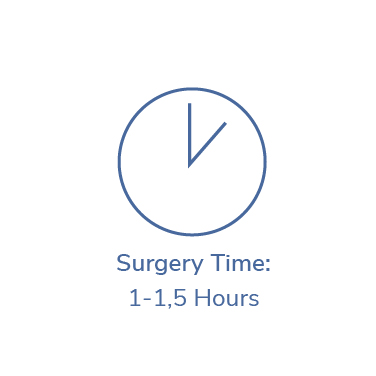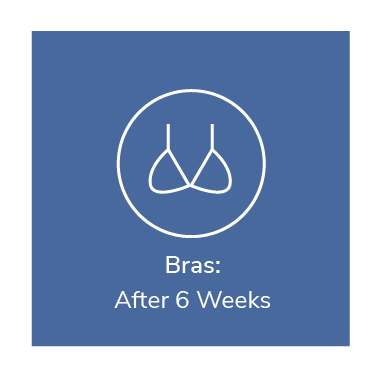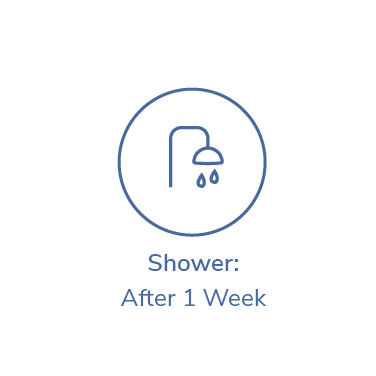




















WHAT IS AN Eyelid Surgery?
Blepharoplasty is the medical name for surgery of the eyelids. It involves the removal of baggy skin from the upper and lower lids, along with any excess fat and muscle. It can be performed on either the upper lids or the lower or both together. The eyes are the focal point of the face and they give away ones expression and mood often better than speaking, which is why so many of us put so much effort into keeping them wide open, fresh and young.
The skin around the eyes can be quite thin and delicate. Often the first signs of ageing begin in this area such as skin stretching, muscle weakening and extra fat accumulating under the eyes and on the brow bone. This may lead to sagging eyebrows, drooping upper lids and under eye bags. Blepharoplasty can revitalise the eyes and in doing so create a more youthful expression.
Blepharoplasty can be performed under local anaesthetic but is more commonly performed under a general anaesthetic, requiring an overnight stay at the Hospital. Incisions are carefully placed so that within several months they will hardly be visible. On the upper lids the incision is about an inch long and lies in the fold of the eyelid. On the lower eyelids the incision is made just under the lashes in the natural crease. The excess skin and muscle fibres are then removed along with the puffy, fatty tissue. The incisions are closed using very fine suture material.
Here are some factors to consider when contemplating eyelid surgery:
Excess skin or sagging eyelids: If you have excess skin on the upper eyelids that droops and interferes with your vision or makes you appear tired or older, eyelid surgery may be beneficial. Similarly, if your lower eyelids sag, creating under-eye bags or a tired appearance, eyelid surgery can help correct this issue.
Puffiness or bags under the eyes: If you have prominent under-eye bags or puffiness that doesn’t improve with adequate rest or skincare, eyelid surgery can help address this concern. The procedure can remove or reposition fat deposits, resulting in a more youthful and refreshed appearance.
Impaired vision: In some cases, excessive skin on the upper eyelids can obstruct the field of vision. If this is the case, eyelid surgery can not only enhance your appearance but also improve your visual function and overall quality of life.
Aging signs around the eyes: As we age, the skin around the eyes can lose elasticity and become wrinkled or creased. If you are bothered by the signs of aging around your eyes, such as fine lines, wrinkles, or loose skin, eyelid surgery can help rejuvenate the area and restore a more youthful and rested appearance.
Personal dissatisfaction: If you are dissatisfied with the appearance of your eyelids and it affects your self-confidence or self-esteem, eyelid surgery can provide a cosmetic solution to address your concerns and enhance your overall facial harmony.
Upper eyelid surgery and lower eyelid surgery are distinct procedures that focus on different areas of the eyes. Here are the key differences between these two types of eyelid surgery:
Area of Focus:
Upper Eyelid Surgery (Upper Blepharoplasty): This procedure targets the upper eyelids and addresses concerns such as excess skin, drooping eyelids, hooded appearance, and puffiness in the upper eyelid area. It aims to create a more youthful and refreshed appearance by removing or repositioning excess skin, muscle, and fat.
Lower Eyelid Surgery (Lower Blepharoplasty): Lower eyelid surgery focuses on the lower eyelids and targets concerns such as under-eye bags, puffiness, wrinkles, and sagging skin. It involves removing or repositioning excess fat, skin, or muscle in the lower eyelid area to achieve a smoother and more rejuvenated appearance.
Incision Placement:
Upper Eyelid Surgery: The incisions for upper eyelid surgery are typically made in the natural crease of the upper eyelids. This allows for discreet scar placement, which is well-hidden within the natural folds of the eyelids.
Lower Eyelid Surgery: The incisions for lower eyelid surgery can be made in two different locations, depending on the technique used. One approach involves making an incision just below the lower lash line, while another technique called the transconjunctival approach involves making an incision on the inside of the lower eyelid (no external incision). The choice of incision placement depends on the specific concerns being addressed and the surgeon’s preferred technique.
Purpose:
Upper Eyelid Surgery: The primary purpose of upper eyelid surgery is to improve the appearance of the upper eyelids, addressing concerns such as hooded or drooping eyelids that may affect vision or create a tired or aged look.
Lower Eyelid Surgery: Lower eyelid surgery primarily targets the lower eyelids to address issues such as under-eye bags, puffiness, and sagging skin. It aims to create a more youthful and refreshed appearance by reducing the prominence of under-eye bags and smoothing out wrinkles in the lower eyelid area.
It’s worth noting that in some cases, individuals may benefit from both upper and lower eyelid surgery to achieve comprehensive rejuvenation of the entire eye area. However, the specific procedures performed and techniques used will vary based on the individual’s unique needs and desired outcomes.
Improved appearance: Eye bags can make you appear tired, older, or constantly fatigued. Eye bag removal surgery can significantly improve the appearance of the eyes by reducing or eliminating under-eye bags, giving the face a more refreshed and youthful look.
Reduction of puffiness: Under-eye bags are often caused by excess fat deposits or fluid retention in the lower eyelid area. Eye bag removal surgery removes or repositions these excess fat deposits, reducing the puffiness and creating a smoother contour.
Reduction of dark circles: Dark circles under the eyes can be caused by shadows created by the protrusion of under-eye bags. By addressing the bags, eye bag removal surgery can help diminish the appearance of dark circles, leading to a brighter and more rested appearance.
Restored self-confidence: Eye bags can have a significant impact on self-esteem and self-confidence. By improving the appearance of the eyes, eye bag removal surgery can enhance self-image and boost confidence levels, allowing individuals to feel more comfortable and satisfied with their overall appearance.
Functional improvement: In some cases, severe under-eye bags can impair vision or cause discomfort. Eye bag removal surgery can address these functional issues by removing excess tissue that obstructs the field of vision and improving overall eye comfort.
Long-lasting results: Eye bag removal surgery provides long-lasting results. Once the excess fat and tissue are removed, they do not typically return. However, it’s important to note that the natural aging process may still affect the area around the eyes over time.






WHAT they say
Before the treatment I was always bullied about my lopsided face and bad skin condition. Thank you!
virginia hudson
Beauty has so many forms, and I think the most beautiful thing is confidence and loving yourself.
Kiesza
I had the most amazing experience, from the moment I walked in to the moment I walked out I was cared for with such compassion. All the nurses were amazing, they tucked me in bed, they poured my tea, I cannot fault them. It was like being looked after by family. My anesthetist and surgeon explained everything in detail, I knew exactly what to expect. I would definitely stay here again.
Laura
I was really pleased with the care and treatment that I received at Welbeck Hospital. My surgeon was kind and informative and explained the entire procedure to me. I recovered completely fast. I would recommend it to everyone.
Eva Elliot
FAQS
The recovery time can vary among individuals, but typically, the initial swelling and bruising improve within the first one to two weeks. Most people can resume normal activities and return to work within 10 to 14 days. However, it may take several weeks or months for all swelling to fully subside and for the final results to become apparent.
Incisions for blepharoplasty are typically made in inconspicuous locations, such as the natural creases of the eyelids. This helps minimize visible scarring. As the incisions heal, any scarring will gradually fade and become less noticeable over time.
The results of blepharoplasty are intended to be long-lasting. Once the excess fat and tissue are removed, they do not typically return. However, it’s important to keep in mind that the natural aging process can still affect the area around the eyes, and future changes may occur. Maintaining a healthy lifestyle, including protecting the skin from sun exposure, can help preserve the results.
Blepharoplasty primarily targets the removal of excess fat and tissue to address under-eye bags and puffiness. While it can provide some improvement in the appearance of fine lines and wrinkles around the eyes, it is not specifically designed to treat crow’s feet or other facial wrinkles. Additional treatments, such as Botox or dermal fillers, may be recommended to address those concerns.
Yes, blepharoplasty can be combined with other facial procedures, such as facelift, brow lift, or rhinoplasty, depending on your specific needs and goals. Combining procedures can provide more comprehensive results and potentially reduce overall recovery time.
Blepharoplasty is typically performed to improve the appearance of the eyelids and under-eye area. However, in some cases, severe under-eye bags or excess skin can obstruct vision. In these situations, blepharoplasty can help improve vision by removing the excess tissue that obstructs the field of vision.
As with any surgical procedure, blepharoplasty carries potential risks and complications, although they are generally rare. These may include infection, bleeding, scarring, dry eyes, temporary or permanent changes in sensation, asymmetry, or unsatisfactory aesthetic outcomes. It is important to discuss the potential risks with your surgeon and ensure you have realistic expectations about the outcomes of the surgery.
In most cases, blepharoplasty does not significantly affect the ability to close the eyes fully. Skilled surgeons take care to preserve the necessary support structures and ensure proper closure of the eyelids. However, it is important to discuss any concerns about eyelid closure with your surgeon during the consultation. Rarely, some temporary eyelid tightness or difficulty fully closing the eyes may occur during the initial healing period, but it typically resolves as the tissues heal and adapt.







